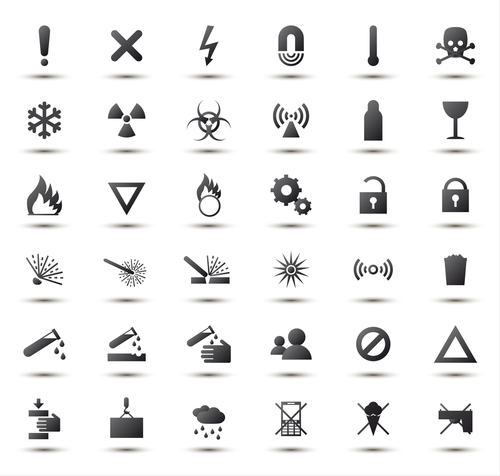When we think of chemical labeling, we tend to think of “ordinary” situations—gallon jars of sulfuric acid sporting OSHA’s new pictograms, or bags of insulation with their hazard labels prominently displayed. But hazardous chemicals don’t always come in what we think of as “ordinary” containers, nor do they stay there—they are, after all, intended for use. How should you address labeling under these unusual circumstances?

Labeling Solid Materials
Solid materials are often classified as “articles” and are therefore exempted from hazard labeling. A solid material is an article if it is formed to a specific shape or design during manufacture that is necessary for its end use —in other words, if it will not be re-formed or reshaped significantly at the point of end use, and if, under normal conditions, it does not release more than very small quantities of a hazardous chemical, such that it does not pose a physical hazard or health risk to employees.
Some solid materials, though, are intended for alteration at the point of end use that can release hazardous chemicals in significant quantities.
- Solid metals, such as steel beams or metal castings, may release hazardous chemicals if they are welded, cut, sanded, heated, or otherwise altered.
- Solid wood products may pose a hazard when they are cut or sanded, producing sawdust, or even during handling, if they are treated with hazardous chemicals.
- Plastics may also release hazardous chemicals if they are cut, melted, or otherwise reformed.
Great news! BLR’s renowned Safety.BLR.com® website now has even more time-saving features. Take our no-cost site tour! Or better yet, try it at no cost or obligation for a full 2 weeks.
Shipments of whole grain are also considered “solid materials” under the hazard communication standard, but they may pose physical hazards (such as engulfment or explosion) and so must be labeled.
For this category of hazardous materials, labeling of individual items is not required. Instead, labels for solid materials that are intended for additional processing, and for shipments of whole grain, may be transmitted to the customer:
- With the initial shipment to the customer, or
- With the Safety Data Sheet (SDS) for the material, ahead of the initial shipment.
Your one-stop safety management resource, available 24/7. Go here to take a no-cost site tour or here to try it in your own office!
It is not necessary to include a new label with each subsequent shipment. Only if the information on the label changes is the supplier required to provide a new one.
This exception to the requirement that each container or item be labeled applies only to the solid material itself. It does not apply to any hazardous chemicals that may be present in, with, or on the material to which workers might be exposed, including cutting fluids on metals or pesticides in grains. Those types of hazardous chemicals must be labeled on each item or with each shipment.
Tomorrow, we’ll look at other unusual labeling situations.
